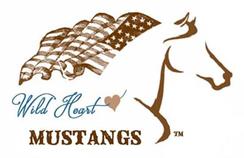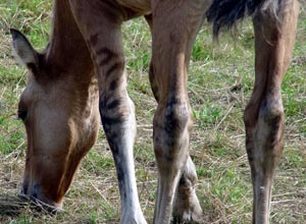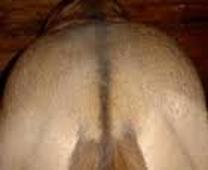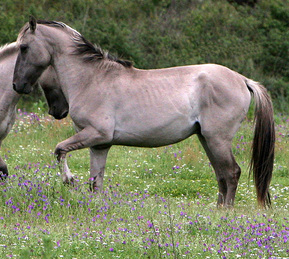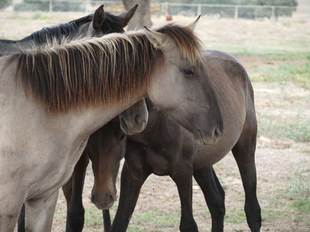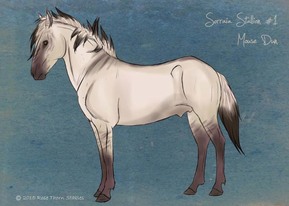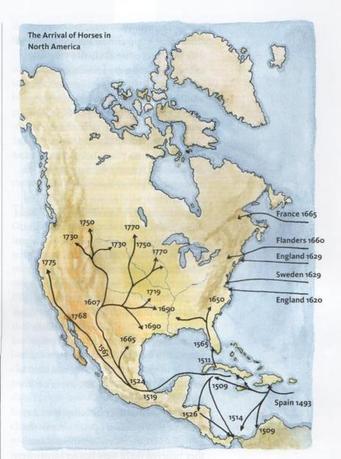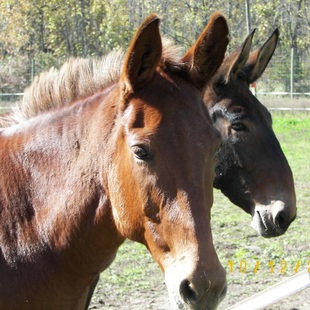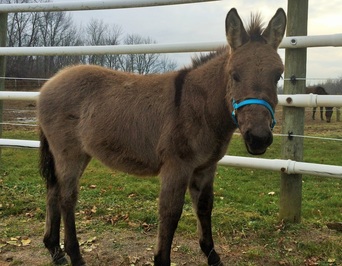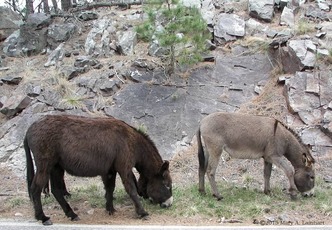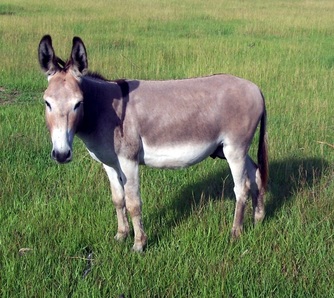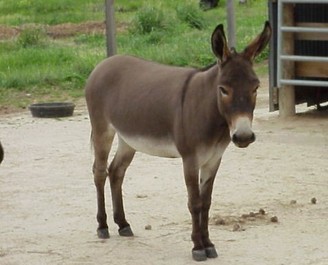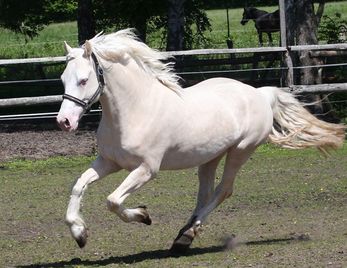|
FEATURE ARTICLES
by Mary A. Lainhart
A Short History of the
|
Illustration of the Sorraia horse
by Rose Thorn Stables The arrival of horses in North America
The Spanish enslaved the Native Americans. These slaves and other workers learned about horses from working on the Spanish ranches. They learned equine skills such as breeding, training, riding, packing and care. Some slaves escaped, taking horses with them. Others had the skills to capture free roaming horses and trained them. When used for trade, the horses spread to other tribes.
Horses gained value as they opened new possibilities for Native Americans. They allowed men to hunt buffalo more productively than ever before, travel farther, and make devastating raids against other tribes. They relieved women of duties like lugging possessions from camp to camp. They tipped the balance, in population growth and territorial expansion, between hunting tribes and farming tribes, favoring the former. They also replaced the only previously domesticated animal in North America, the dog. Horses became prized as wealth. As such, they were stolen in raids, used for trading and captured in the wild. By the 1600’s horses had spread northward via developing Spanish missions. After 1680, the Pueblo Indians forced the Spanish out of New Mexico. Many horses were left behind. The Pueblos took the abandoned horses and used them, raising large herds of horses as well as selling them and trading them to other tribes. They also taught other Indian tribes how to ride and raise horses. Horses began spreading across North America. But in the late 1830’s, the relative peace that Native Americans had enjoyed for centuries was shattered. We’ll continue this story in the next chapter of History of the American Mustangs… |
DONKEYS, BURROS, ASSES & MULES...
|
MULES
Mules are the hybrid cross of a male donkey (jack) and a female horse (mare). Meredith Hodges, (renowned trainer of donkey, mules, horses and other equine hybrids) describes mules as “most often demonstrating the best traits of each parent, he possesses what we call hybrid vigor. The mule inherits from the donkey his incredible strength, intelligence, patience, perseverance, endurance and surefootedness from the jack and his equine beauty, athletic ability and speed from the horse." Hodges adds that the mule “has more endurance by far than the horse, and is more resistant to parasites and disease, requires less feed for good health, has tougher hooves than the horse, and an incredible sense of self-preservation that keeps them safe, and which is often mistaken for stubbornness. The horse has a flight reflex when startled and the donkey has a freeze reflex; mules can exhibit both the freeze and flight reflexes depending on their own unique personalities and the situation at hand.” Because mules are hybrids they are sterile. The donkey has 64 chromosomes, the horse 62. The result is the mule which has 63 chromosomes and cannot reproduce. Although there has been some extremely rare documentations of mules that have had offspring, this is not the norm. Like the donkey, the mule also has a unique voice – which starts off as the donkey’s bray and ends with the horse's whinny. Donkeys, mules, horses all come in a variety of sizes, from miniatures to mammoth. Likewise, they come in a variety of colors and markings. Donkeys, mules and horses should all be wormed, have veterinary care and farrier care for their well-being. |
